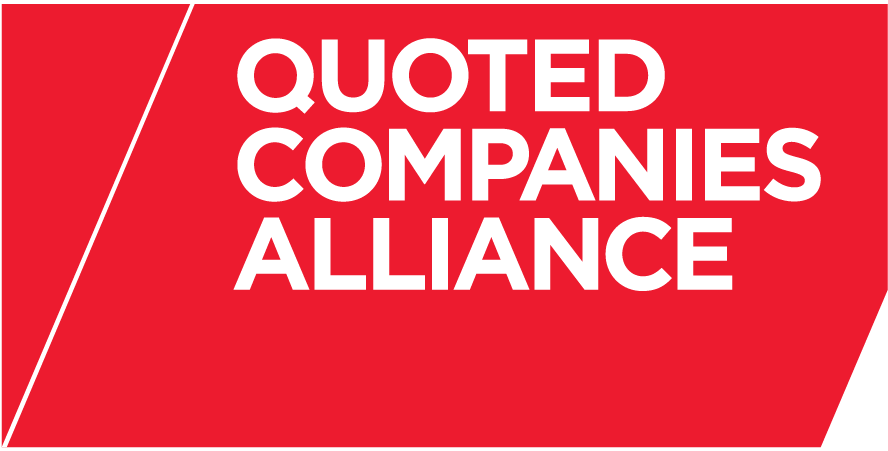The new EU Prospectus Regulation, which entered into force on 20 July 2017 (although many of its provisions take effect on 21 July 2018 and 21 July 2019), aims to facilitate access to capital at each stage of a company’s development, helping businesses tap into more diverse sources of capital, thus reducing reliance on banks for funding, while offering investors additional opportunities to put their money to work, in order to promote growth and create jobs.
The Prospectus Regulation seeks to achieve this objective by introducing changes covering the full life-cycle of a company – from start-up to frequent issuer on a regulated market. In summary, the Prospectus Regulation intends to promote access to the “funding escalator”, as follows:
- Start-ups: Entrepreneurs will be exempt from preparing a prospectus when raising small amounts of capital.
- Small and medium sized companies (SMEs): Once a company has grown and needs access to larger amounts of capital, a tailored disclosure regime will help SMEs (i.e., companies with a market capitalisation of up to €43 million, turnover of up to €5 million or fewer than 250 employees) and companies with a reduced market capitalisation access capital markets without the burden of preparing a full prospectus.
- Seasoned issuers: Companies which are returning to capital markets can draw up lighter prospectuses for subsequent issuances. Frequent issuers can benefit from a fast-track approval when choosing to draw up an annual “universal registration document” containing all the relevant information about the issuer.
While the majority of the Prospectus Regulation will apply from 21 July 2019, certain provisions (indicated below) are already in effect, or will come into effect on 21 July 2018. The Prospectus Regulation repeals and replaces the Prospectus Directive (and related regulations), which currently governs EU prospectus requirements.
The Prospectus Regulation is a major initiative of the European Commission’s Capital Markets Union action plan, which is seeking to address the 50% decrease in SME initial public offerings in Europe since the financial crisis by providing a diversified set of financing options for SMEs throughout their lifecycle, helping to prepare such companies for an IPO.
In line with this aim, in May 2018, the European Commission proposed new rules aimed at cutting the red-tape for SMEs to list and issue securities on "SME Growth Markets", a new category of trading venue dedicated to SMEs, and to foster the liquidity of publicly-listed SME shares.
The main proposed changes to SME listings rules include:
- Adapting current obligations to keep registers of persons that have access to price-sensitive information so as to avoid excessive administrative burdens for SMEs;
- Allowing issuers with at least three years of listing on SME Growth Markets to produce a lighter prospectus when transferring to a regulated market;
- Making it easier for trading venues specialised in bond issuances to register as SME Growth Markets by setting a new definition of debt-only issuers (companies that issue less than €50 million of bonds over a 12-month period); and
- Creating a common set of rules on liquidity contracts for SME Growth Markets in all Member States, in parallel to national rules.
With the European Commission focussed on making it easier for SMEs to access public capital, life sciences companies targeting the EU capital markets may benefit from the reforms made.
Key Changes under the Prospectus Regulation
1. Increase to small capital raisings exemption threshold
From 21 July 2018, a prospectus will not be required for offers to the public in the EU of a total value of less than €1 million (in total over a period of 12 months) up from €100,000.
Additionally, individual Member States may exempt domestic offers where the total consideration of each offer in the EU is between €1 million and €8 million (the current threshold is €5 million).
What impact will this have?
The increased threshold at which a prospectus is needed in order to make an offer to the public is likely only to affect companies that are in the very early stages of development, which currently rely on bank loans or grants for funding. The increase to the threshold for small capital raisings, from €100,000 under the existing regime to €1 million, significantly increases opportunities for very small offerings and crowdfunding projects. However, for the 2,000 or so SMEs operating in the life sciences sphere, for example, €1 million is unlikely to go very far in covering ongoing R&D costs, and this exemption will likely continue to be useful only to such companies if used in conjunction with other financing methods.
The €5 million exemption set out under the Prospectus Directive has been well-used by SMEs, and any Member State that increases the threshold to €8 million will likely see the amount raised by start-ups without a prospectus, increase in line with the threshold. However, the Prospectus Regulation leaves it to Member States to exercise their own discretion as to whether to increase the threshold and at this stage the extent to which the increased threshold will be adopted remains unclear.
2. Creation of the “EU growth prospectus”
From 21 July 2019, a new EU growth prospectus will be available to SMEs (i.e., companies with a market capitalisation of up to €43 million, turnover of up to €5 million or fewer than 250 employees), mid-sized companies admitted to an SME Growth Market (provided their market capitalisation is less than €500 million) and other non-listed issuers (such as larger companies with market capitalisations over these thresholds but that have 499 employees or fewer) where the offer is of a total consideration of less than €20 million.
The EU growth prospectus allows issuers to draw up a simplified document when offering securities to the public, provided that their securities are not traded on a regulated market. SMEs will also be able to passport an approved EU growth prospectus into other EEA Member States.
What impact will this have?
The simplified disclosure requirements included in the EU growth prospectus should make it cheaper and easier for SMEs to raise funds of up to €20 million. This could potentially promote access for SMEs to the equity capital markets at an earlier stage than has been the case under the Prospectus Directive, which also has the benefit of increasing the relevant company’s public profile and brand recognition – a significant benefit for a life sciences company that is in the process of looking to enter into a strategic collaboration partnership or arrangement in a competitive marketplace.
Whether the new rules encourage SMEs and others to issue under an EU growth prospectus will depend ultimately on whether the disclosure is in fact lighter. When similar reforms to the Prospectus Directive were introduced in 2010, which were also intended to increase SME participation in the equity capital markets by creating a proportionate disclosure regime, the alternative disclosure rules were rarely used. Companies did not want to be perceived as giving a lower level of disclosure and, therefore, opted to adhere to the standard disclosure regime instead. Investment banks were also keen to follow market practice in respect of disclosure. At this stage, it is unclear if the same attitudes will prevail with respect to the EU growth prospectus.
Issuers should also note that where they already have securities admitted to trading on a regulated market, they will not be eligible to use the lighter disclosure rules, in order to avoid a ‘two-tier’ disclosure standard.
3. Simplified disclosure requirements for subsequent offerings and increase to exemption threshold for tap issuances
Since 20 July 2017, a prospectus has not been required to list fungible securities (including shares) of the same class as securities already admitted to trading on the same regulated market, if those securities represent less than 20% of that class (an increase from the previous 10% cap).
With effect from 21 July 2018, a simplified prospectus will be available for issuers whose securities have been admitted to trading on a regulated market or an SME Growth Market continuously for at least 18 months.
What impact will this have?
Around 70% of all prospectuses approved annually are drawn up by companies whose securities are already listed on a regulated market and which are, therefore, already subject to ongoing disclosure requirements under the Market Abuse Regulation and the Transparency Directive (more information here). The two changes outlined above are therefore expected to have a significant impact by reducing the cost of such offerings (or tap issuances), helping early-stage companies that require upfront cash to return to market as and when additional capital is needed.
Issuers should note in respect of the increase to the prospectus exemption threshold for tap issuances, that the ability to access such relief will depend on the EU Member State in which they are located. In certain Member States, national law does not allow for the disapplication of pre-emption rights, requiring companies to go to their existing shareholders for approval prior to making an offering. While the Prospectus Regulation theoretically removes this obligation, this may be irrelevant if it results in the issuer being in breach of local legislation that grants pre-emptive rights. In addition, in certain Member States (such as Germany and Austria) impose a 10% full documentation threshold for capital increases without the disapplication of pre-emption rights.
4. Creation of the Universal Registration Document (“URD”)
From 21 July 2019, an issuer whose securities are admitted to trading on a regulated market has the option to draw up a URD each financial year (which describes certain key features of the issuer’s business and organisation). The URD is a shelf registration document that allows frequent issuers to benefit from a fast track prospectus approval process and more streamlined financial reporting requirements.
What impact will this have?
URDs will enable issuers to quickly access the capital markets when needed or when market conditions are favourable, as URDs will be subject to a faster approval process than a standard prospectus, since the main part of the prospectus will have already been reviewed or be available for review. This will be useful for larger life sciences companies that are looking to take advantage of market windows.
A further significant benefit of URDs is that URDs can be used in lieu of annual financial reports (if published within four months after the end of the financial year) or half-yearly financial reports (if published within three months after the end of the first six months of the financial year) required under the Transparency Directive, saving the cost and time of having to make duplicative public disclosures to the market.
Conclusion
Access to capital is essential for life sciences companies, particularly during the development-stage, yet European life sciences companies and other SMEs have traditionally been dependent on bank financing, especially in comparison to their U.S. counterparts. In the past, such companies have been deterred from offering securities to the public by the paperwork involved and the high costs incurred. The Prospectus Regulation should make it easier for such companies to fulfil their disclosure obligations, but in a way that investors are still well-informed about the products they are investing in.
This article was written by Patrick Lyons, David Rosenthal and David Schulman, Partners at Dechert LLP, and Amy Rees, an Associate at Dechert LLP.

